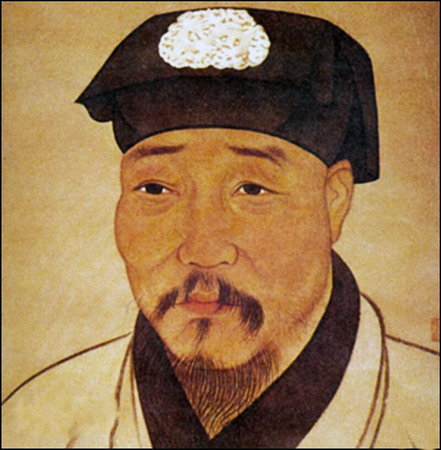Xu Wei
Xu Wei (1521-1593) was from Shanyin, Shaoxing in the Ming Dynasty. His father died when he was quite young. A precocious boy, Xu Wei caused a sensation in Shaoxing city as a teenager when he modeled an essay on an ancient classic essay by Yang Xiong (53BC-18AD), a great scholar of the western Han Dynasty.

In the Jiajing period of the Ming Dynasty, Japanese pirates harassed Zhejiang and Jiangsu. Xu Wei joined the army to fight the pirates. Versed with the art of war, he was good at making incredible plots. He captured pirate Xu Hai and killed Wang Zhi in a setup. His military exploits were deeply appreciated. A marvelous writer, Xu wrote a memorial to the throne, which went with a white deer as a tribute to the emperor. Emperor Shizong praised the memorial. In his late years, he lived in a house called Green Vine Study in Qianguan Lane in Shanyin City (today’s Shaoxing city). Though living in poverty, Xu was a proud and unconventional man. He refused to see the rich or government officials who came to visit him. He wrote a poem entitled Crabs to show his attitude to the public. He died in loneliness at age 73. His relatives buried him at Jiangpo Mountain 7.5 kilometers southwest of the city proper of Shaoxing, a cultural relic under the protection of Shaoxing County government today.

Xu Wei was an accomplished calligrapher, painter, poet, and dramatist. His ink and wash painting creations broke away from traditions and blazed a new trail in the Chinese traditional art. His fresh and ebullient style created the hallmark for a painting school named after him. He was regarded as originator of the school. Chen Laolian (1598──1652), Zheng Banqiao (1693--1766), and Qi Baishi (1864 ~ 1957) were all outstanding artists who inherited Xu’s original style. Essays on Nanci by Xu Wei is a well known academic discussion of Chinese opera. Si Sheng Yuan, a poetic drama to music, a play by Xu Wei still available today. Twenty years after Xu’s demise, Yuan Hongdao ran into an incomplete copy of Xu’s calligraphic handwriting on a tour to central Zhejiang. He showed the copy to Tao Wangling. Yuan Hongdao’s ecstasy knew no bounds when he read through Xu’s writings and calligraphic works. Yuan appreciated Xu’s works so much that he collected and published Xu’s writins and calligraphic works. Today available are Xu Wei’s Collected Works, Xu Wei’s Manuscripts and Xu Wei’s Handwritings. Zhonghua Publishing House has collected and anthologized Xu’s works in Collected Works of Xu Wei. The Green Vine Study is now a cultural relic under the protection of Zhejiang Provincial Government.
Source: travelchinaguide.com
Editor: Wang Moyan
|

